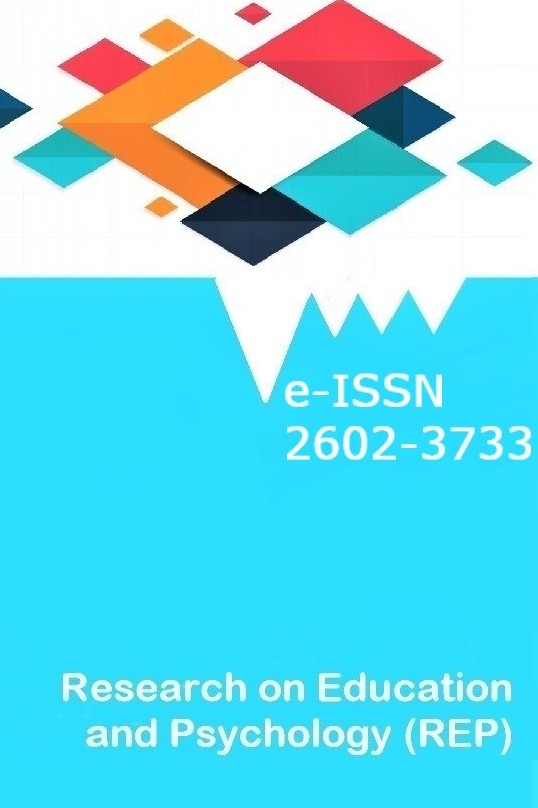Students’ Attitude and Anxiety Towards Statistics A Descriptive Analysis
Students’ Attitude and Anxiety Towards Statistics A Descriptive Analysis
___
- Arnold, P., Pfannkuch, M., Wild, C. J., Regan, M., & Budgett, S. (2011). Enhancing students’ inferential reasoning: From hands-on to “movies". Journal of Statistics Education, 19(2), 1–32.
- Baloğlu, M., Kocak, R., & Zelhart, P. F. (2007). The relationship between statistics anxiety and attitudes toward statistics. Journal of Faculty of Educational Sciences, 40(2), 23–39.
- Estrada A., Batanero C., Lancaster S. (2011) Teachers’ attitudes towards statistics. In: Batanero C., Burrill G., Reading C. (Eds.), Teaching Statistics in school mathematics-challenges for teaching and teacher education (pp 163-174). New ICMI Study Series, vol 14. Springer, Dordrecht.https://doi.org/10.1007/978-94-007- 1131-0_18
- Chiesi, F., & Primi, C. (2010). Learning probability and statistics: Cognitive and non-cognitive factors related to psychology students’ cchievement. In Proceedings of the Eighth International Conference on Teaching Statistics (ICOTS8). Retrieved from https://iase-web.org/documents/papers/icots8/ICOTS8_7C1_CHIESI.pdf
- Creswell, J. W. (2012). Survey designs. In educational research : Planning, conducting and evaluating quantitative and qualitative research (4th Ed., pp. 375–421). Boston: Phoenix Color Corp.
- Cruise, R. J., Cash, R. W., & Bolton, D. L. (1985). Development and validation of an instrument to measure statistical anxiety. In American Statistical Association. Las Vegas, Nevada.
- Devaney, T. A. (2010). Anxiety and attitude of graduate students in on-campus vs. online statistics courses. Journal of Statistics Education, 18(1), 1–15.
- Hairulliza, M. J., Noraidah, S., Hazura, M., & Tengku Meriam, T. W. (2011). Students profile based on attitude towards statistics. Procedia - Social and Behavioral Sciences, 18, 266–272. http://doi.org/10.1016/j.sbspro.2011.05.038
- Hanna, D., Shevlin, M., & Dempster, M. (2008). The structure of the Statistics Anxiety Rating Scale : A confirmatory factor analysis using UK psychology students. Personality and Individual References, 45, 68– 74. http://doi.org/10.1016/j.paid.2008.02.021
- Khavenson, T., Orel, E., & Tryakshina, M. (2012). Adaptation of survey of attitudes towards statistics (SATS 36) for Russian sample. Procedia - Social and Behavioral Sciences, 46, 2126–2129. http://doi.org/10.1016/j.sbspro.2012.05.440
- Koh, D., & Mohd Khairi, Z. (2014). Statistics anxiety among postgraduate Students. International Education Studies, 7(13), 166–174. http://doi.org/10.5539/ies.v7n13p166
- Lai, G., Tanner, J., & Stevens, D. (2011). The importance of mathematics competency in statistical literacy. Advanced in Business Research, 2(1), 115–124.
- Li, L. K. Y. (2012). A study of the attitude , self-efficacy , effort and academic achievement of city students towards research methods and statistics. Discovery-SS Student E-Journal, 1, 154–183.
- Maat, S. M. (2011). Hubungan antara kepercayaan matematik, amalan pengajaran dan pengetahuan pedagogi kandungan guru-guru matematik sekolah menengah (Doctoral dissertation, Tesis doktor falsafah, Universiti Kebangsaan Malaysia). Retreived from http://merr.utm.my/id/eprint/14517
- Maat, S. M., Zakaria, E., & Rosli, R. (2016). Descriptive study on students’ anxiety towards statistics. Indian Journal of Science and Technology, 9(48), 1-6.
- Marzita, P. (2002). Factors associated with mathematics anxiety. Tanjung Malim: Universiti Pendidikan Sultan Idris.
- Millar, A. M., & Schau, C. (2010, September). Assessing students’ attitudes: the good, the bad, and the ugly. Paper presented at 24th Mathematics Education Research, Budapest, Hungary.
- Mira Khalisa, R., & Siti Mistima, M. (2017). Attitude towards Statistics and performance among post-graduate students (pp. 30004). http://doi.org/10.1063/1.4983881
- Nik Pa, N. A. (2014). Penghasilan disertasi berkualiti dalam pendidikan matematik. Kuala Lumpur: Penerbit Universiti Malaya.
- Noraidah, S., Hairulliza, M. J., Hazura, M., & Tengku Meriam, T. W. (2011). Student’s attitude towards statistics course. Procedia - Social and Behavioral Sciences, 18, 287–294. http://doi.org/10.1016/j.sbspro.2011.05.041
- Norman, R. T., & Money, E. T. (2011). Decision aids for business ethics education. In C. Wankel & A. Stachowicz-Stanusch (Eds.), Handbook of research on teaching ethics in business and management education (pp. 181–200). Information Science Reference.
- Onwuegbuzie, A. J. (2004). Academic procrastination and statistics anxiety. Assessment & Evaluation in Higher Education, 29(1), 3–19.
- Pallant, J. (2013). SPSS survival manual. New York, NY: Mc Graw Hill.
- Reeinna, N. A. (2014). Student’s attitude towards introductory statistics course at public universities using partial least square analysis. Interdisciplinary Journal of Contemporary Research in Business, 6(4), 94–123.
- Schau, C. (2003, August). Students’ attitudes: The “other” important outcome in statistics education. In Proceedings of the joint statistical meetings (pp. 3673-3681). San Francisco.
- Sesé, A., Jiménez, R., Montaño, J., & Palmer, A. (2015). Can Attitudes Toward Statistics and Statistics Anxiety Explain Students ’ Performance ?, 20(2), 285–304. http://doi.org/10.1387/RevPsicodidact.13080
- Siti Mistima, M., Effandi, Z., & Roslinda, R. (2016). Descriptive study on students’ anxiety towards statistics. Indian Journal of Science and Technology, 9(48). http://doi.org/10.17485/ijst/2016/v9i48/90779
- Slootmaeckers K. (2012, July). Too afraid to learn? Attitudes towards statistics as a barrier to learning Statistics and to the acquiring of quantitative skills. Paper presented at EDULEARN12 International Conference on Education and New Learning Technologies. Barcelona, Spain.
- Slootmaeckers, K., Kerremans, B., & Adriaensen, J. (2014). Too afraid to learn: Attitudes towards statistics as a barrier to learning statistics and to acquiring quantitative skills. Politics, 34(2), 191-200.
- Watson, J. M. (2006). Issues for statistical literacy in the middle school. In ICOTS-7 Conference Proceedings. IASE, Salvador (CD-Rom) (pp. 1-6). Retreived from http://iase- web.org/documents/papers/icots7/6C1_WATS.pdf
- Yayın Aralığı: Yılda 4 Sayı
- Başlangıç: 2017
- Yayıncı: Bülent DİLMAÇ
The Use of Simulation in Nursing Education: The Example of Myocardial Infarction
The Relation of Future Time Perspective on Health Behaviors in High School Students
Selin (inag) ÇENBERCİ, Ayşe YAVUZ, Gülsüm YÜCA
Students’ Attitude and Anxiety Towards Statistics A Descriptive Analysis
Mira Khalisa ROSLİ, Siti Mistima MAAT, Nda ROSLİ
An Analysis of the Relationship between Values and Optimism among Adolescents
Zübeyde BÜYÜKADIGÜZEL, Zeliha TRAŞ
Social, Psychological, Philosophical and Educational Bases of Science Education: Chaos and Order
